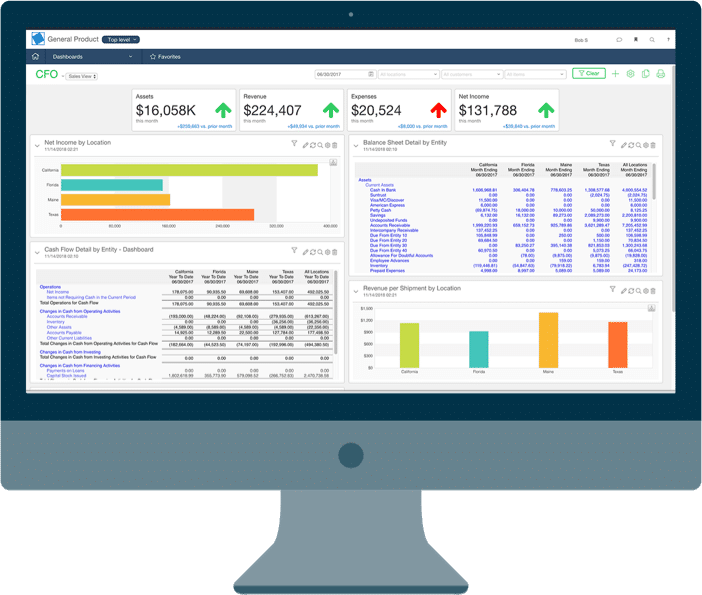In accounting, what is the definition of current assets?
Current assets are the assets of a company that are anticipated to be transformed into cash or depleted within a year or one operating cycle, whichever is greater. These assets are usually arranged in order of their liquidity, indicating how rapidly they can be converted into cash. Current assets play a crucial role in a company’s working capital and offer valuable information about its short-term liquidity and operational effectiveness.
Common examples of current assets include:
Cash and Cash Equivalents: This includes physical currency, bank accounts, and highly liquid investments with short-term maturities.
Accounts Receivable: Amounts owed to the company by customers for goods or services sold on credit. These are usually expected to be collected within a short period.
Inventory: The goods that a company has on hand and intends to sell. Inventory can include raw materials, work-in-progress, and finished goods.
Prepaid Expenses: Payments made in advance for goods or services that will be received in the future. Examples include prepaid rent or insurance.
Short-Term Investments: Investments that can be quickly converted to cash and have maturities of one year or less.
Notes Receivable (Short-Term): Promissory notes or other written promises to receive money within one year.
The total of these current assets is often used to calculate a company’s current ratio, which is a measure of its short-term liquidity and ability to meet its short-term obligations. The formula for the current ratio is:
Current Ratio = Current Assets ÷ Current Liabilities
A higher current ratio is generally considered favorable as it indicates a better ability to cover short-term liabilities. However, an excessively high current ratio may suggest that a company is not efficiently deploying its resources. The interpretation of current assets and ratios may vary across industries and companies.
In accounting, what is the definition of non-current assets?
In accounting, non-current assets, also known as long-term assets or fixed assets, are resources that a company expects to hold for more than one accounting period, usually for more than a year. These assets are not intended for sale in the normal course of business. Non-current assets are essential for the company’s long-term operations and are typically held for their productive use rather than being held for resale.
Examples of non-current assets include:
Property, Plant, and Equipment (PP&E): This includes land, buildings, machinery, vehicles, and other tangible assets used in the production process.
Intangible Assets: These are non-physical assets that lack a physical substance but have value. Examples include patents, trademarks, copyrights, and goodwill.
Investments: Long-term investments in securities or other companies that are not intended for immediate sale.
Long-term Receivables: Amounts due from customers or others that are expected to be collected after one year.
Non-current assets are reported on a company’s balance sheet, and their value is typically depreciated or amortized over time to reflect their diminishing value or to allocate their cost over their useful life. This is in contrast to current assets, which are assets that are expected to be converted into cash or used up within one year.
AssetAccountant – saving you from spreadsheets since 2019
Current assets vs fixed assets comparison
In accounting, the distinction between current and non-current assets is based on the expected timeframe within which these assets will be converted into cash or used up. Here’s a breakdown of the key differences between current and non-current assets:
Time Horizon
Current Assets: These are assets that are expected to be converted into cash or used up within one year or the operating cycle of the business, whichever is longer. The operating cycle is the time it takes for a company to turn its inventory into cash.
Non-current Assets: These assets have a longer life and are not expected to be converted into cash or used up within the normal operating cycle of the business. They are held for more than one accounting period, typically for long-term use.
Nature of Assets
Current Assets: These assets are often more liquid, meaning they can be quickly converted into cash or used up. Examples include cash, accounts receivable, and inventory.
Non-current Assets: These assets are less liquid and are usually held for their productive use over an extended period. Examples include property, plant, equipment, intangible assets, and long-term investments.
Presentation on the Balance Sheet
Current Assets: These are presented on the balance sheet in the order of their liquidity, with the most liquid assets listed first. Common current assets include cash, accounts receivable, and inventory.
Non-current Assets: These are presented on the balance sheet after current assets and are often broken down into categories such as property, plant, and equipment; intangible assets; and long-term investments.
Valuation and Depreciation
Current Assets: Generally, current assets are stated at their market value or the lower of cost and market value.
Non-current Assets: They are often recorded at cost and are subject to depreciation (for tangible assets) or amortization (for intangible assets) to allocate their cost over their useful life.
Understanding the difference between current and non-current assets is crucial for financial analysis, as it provides insights into a company’s liquidity, operational stability, and long-term investment in productive resources. The classification of assets into these categories also helps in the preparation and analysis of financial statements.
AssetAccountant is a perfect fixed asset depreciation software to automate non-current fixed asset depreciation as well as for lease accounting.
Why are non-current assets not depreciated?
Non-current assets are not depreciated because they are not subject to wear and tear in the same way that tangible fixed assets, such as machinery or vehicles, are. Non-current assets typically include items like land, goodwill, patents, trademarks, and other long-term investments. Unlike tangible fixed assets, these assets don’t have a finite useful life that can be reliably estimated for the purpose of depreciation.
Depreciation is a method used to allocate the cost of tangible fixed assets over their estimated useful lives. It reflects the idea that these assets gradually lose their value over time due to wear and tear, obsolescence, or other factors. However, non-current assets often do not experience a similar decline in value over time, or their value may be more difficult to quantify.
For example:
Land: Land is a non-current asset that is not subject to depreciation because its value is considered to be enduring and does not typically decrease over time.
Goodwill: Goodwill is an intangible asset that represents the excess of the purchase price over the fair value of identifiable net assets acquired in a business combination. While goodwill is tested for impairment, it is not subject to regular depreciation because it is considered to have an indefinite useful life.
In summary, non-current assets are not depreciated because they either do not have a finite useful life or their value is not expected to decline over time in a systematic and measurable way. Instead, these assets are often tested for impairment, and if there is an indication that their value has decreased, an impairment charge may be recorded on the financial statements.
We take depreciation and leasing seriously
We undertake detailed modelling of fixed asset depreciation and lease calculation rules for both accounting and tax.
We monitor changes to ATO tax rulings and accounting standards like IAS 16 and IFRS 16 so you don’t have to.
And, of course, we are ISO27001 certified.
Why our clients love AssetAccountant


Fantastic product - has literally saved me hours of work.


Ever wanted the big company fixed asset system without all the clunkiness and overthinking on the part of the software developers (I'm looking at you Thomson Reuters...)? Well then you need AssetAccountant. It provides just the right mix of complex depreciation calculations and beautiful user interface. It's a system designed by accountants and executed perfectly by developers. The integration is seamless with Xero (you can sign into AA with Xero credentials which is awesome if you are already running Xero on your browser) and journaling synchs are very flexible between the two applications. Then there is the price. I challenge you to find a more robust fixed asset system at these price points. Well done AssetAccountant.
You get me.
I now have my big boy jocks back on for fixed asset management....and they fit!









Ready to kick some assets?
- AssetAccountant is fixed asset software that automates fixed asset depreciation & lease accounting and posts their journals to the General Ledger.
- AssetAccountant combines detailed interpretation of Tax and Accounting rules with a modern user interface design, to simplify the process of creating and maintaining your fixed asset register.
- AssetAccountant is sophisticated enough for Wall Street, user-friendly enough for main street.
- AssetAccountant is for worldwide application 🌎












































